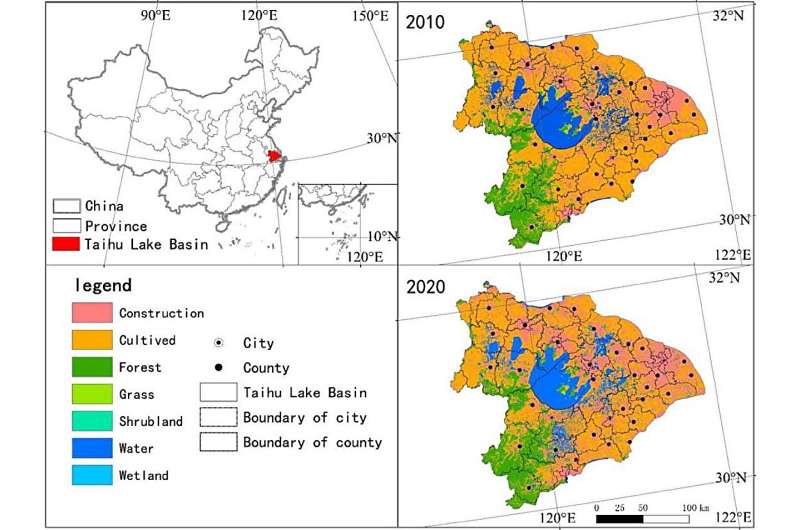This article has been reviewed according to Science X's editorial process and policies. Editors have highlighted the following attributes while ensuring the content's credibility:
fact-checked
proofread
An aid to ecological management and ecosystem services supply and demand dynamics

Ecosystem services (ESs) provide a variety of services and benefits for human well-being, but the supply-demand mechanism of ecosystem services under different spatio-temporal scales is unclear.
The Taihu Lake Basin (TLB) is a microcosm of degraded and unsustainable ecosystem services. Rapid industrialization and urbanization poses a great threat to the environment and ecology. Therefore, it is urgent to assess the changes in supply and demand for TLB ecosystem services from a spatio-temporal and multi-stakeholder perspective, and this will be conducive to the scientific and sustainable development of ecological services.
Circular Agricultural Systems published an online paper, entitled "Quantifying the difference between supply and demand of ecosystem services at different spatial-temporal scales: A case study of the Taihu Lake Basin," on 31 May 2023.
In this study, the InVEST model was used to quantify the dynamics of ESs supply and demand in the TLB from 2010–2020, and compared the mismatch between supply and demand for five ESs (i.e., water yield, carbon sequestration, recreation, food production, and heat regulation services) at four spatial scales (pixel scale, township scale, county scale, and city scale).
The study highlights the increasing quantitative and spatial differences in the supply and demand of environmental services in the TLB, in particular the conflict between carbon sequestration services and heat regulation services, which has become a major constraint to the development of environmental services.
However, there is a demand gap for water yield services and food production services. Evaluations of ecosystem service deficit and redundancy (ESDR) indicate that significant deficits are mainly in densely populated towns of the eastern and central regions, while high surplus areas are mainly in the forested areas in the southwest.
Comprehensive ecosystem service deficit and redundancy (CESDR) metrics showed a decline from -0.03 in 2010 to -0.05 in 2020, among which urban areas like Shanghai and Suzhou reflect pronounced imbalances. The data underscores the urgency for focused policy interventions in regions with high deficit.
In conclusion, this study analyzes the quantitative characteristics and spatial-temporal pattern of the relationship between the supply and demand of ESs in TLB at different scales. It emphasizes that a multi-scale analytical approach should be adopted in policy formulation to achieve a balance between supply and demand through reasonable ecological protection and ecological restoration.
More information: Wei Yang et al, Quantifying the difference between supply and demand of ecosystem services at different spatial-temporal scales: A case study of the Taihu Lake Basin, Circular Agricultural Systems (2023). DOI: 10.48130/CAS-2023-0005
Provided by Maximum Academic Press


















